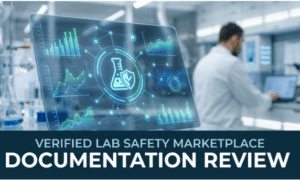In a rapidly evolving digital world, where data drives everything from pandemic response to financial markets and battlefield coordination, the infrastructure that powers these systems must be both agile and secure. Increasingly, that infrastructure is multi-cloud—spread across a constellation of services from Amazon, Microsoft, Google, and others. Yet while the benefits of multi-cloud strategies are well-documented, so are the challenges: integration issues, security blind spots, inconsistent governance, and inefficient scaling.
Enter a groundbreaking study that aims to change the narrative.
Titled “Reimagining Multi-Cloud Interoperability: A Conceptual Framework for Seamless Integration and Security Across Cloud Platforms”, the research is led by Sunday Adeola Oladosu, an independent researcher based in Texas, and supported by collaborators across Canada, Nigeria, and the United States. The study was published in the Open Access Research Journal of Science and Technology, and offers what can only be described as a blueprint for the future of digital infrastructure—not just in technical terms, but in economic and geopolitical ones as well.
“As businesses and public institutions shift to multi-cloud environments, what’s missing is a structured way to make those systems speak the same language while maintaining airtight security,” said Oladosu. “That’s precisely the gap our conceptual framework aims to fill.”
The Framework: Integration, Orchestration, and Security
At the heart of the proposal is a modular framework built on four core pillars: centralised orchestration, standardised APIs and middleware, container-based cross-platform application design, and a unified Zero Trust security model.
These are not abstract ideas. Centralised orchestration ensures that administrators can monitor and allocate cloud resources from one control plane. Standardised APIs and middleware eliminate the headaches that arise when different platforms don’t “speak” to one another. Containerisation makes it possible to deploy software seamlessly across clouds. And Zero Trust architecture means security isn’t dependent on perimeter firewalls but on continuous authentication and role-specific access controls.
“Zero Trust is no longer optional—it’s essential,” said Oladosu. “Every access request in a multi-cloud environment must be authenticated, authorised, and continuously validated. Our framework treats that as a default assumption, not an afterthought.”
As a technology journalist following developments in UK cloud adoption closely, this framework immediately stood out to me—not just for its technical rigour, but for its political and strategic relevance. The UK government’s Cloud First Policy, NHS Digital’s migration plans, and the Ministry of Defence’s Digital Backbone all highlight one thing: cloud integration isn’t coming, it’s here. But without standardisation, these efforts risk becoming fragmented silos—duplicating costs, delaying deployment, and leaving critical systems vulnerable.
“Cloud platforms offer agility, but without standardisation and oversight, they can quickly become fragmented,” Oladosu warned. “In our research, we saw how this can lead to inefficiencies, vendor lock-in, and inconsistent policy enforcement. For public sector bodies in the UK, that’s a significant governance challenge.”

Adeola Oladosu
Relevance to the United Kingdom
The UK is at a pivotal moment. Having left the European Union, it is positioning itself as a global tech leader, while navigating the complexities of sovereignty, cybersecurity, and economic growth. The government’s 2023 National Cyber Strategy calls for more resilient digital infrastructure across the board. Meanwhile, initiatives like the Digital Markets, Competition and Consumers Bill aim to level the playing field against cloud market concentration.
This research couldn’t be more timely. It offers a framework that not only helps UK institutions manage complexity, but does so in a way that is adaptable to the evolving global security climate.
“In our model, we prioritise middleware tools and API standardisation to eliminate those integration gaps,” explained Oladosu. “This isn’t just a backend fix—it’s a governance framework that ensures continuity, resilience, and long-term cost savings.”
The NHS, for example, is already dealing with the complexities of data portability and cybersecurity in cloud environments. A modular and interoperable framework could allow patient data to flow seamlessly across trusts while maintaining GDPR compliance and NCSC security standards.
Likewise, the Financial Conduct Authority (FCA), which regulates over 50,000 firms in the UK, is pushing for better operational resilience across the financial sector. Fintech firms using multi-cloud setups for compliance automation, payments, and risk analytics could greatly benefit from adopting a secure-by-design, interoperable architecture.
“In regulated sectors like finance and healthcare, the ability to control, monitor, and secure data across multiple cloud providers is not just a technical issue—it’s a strategic imperative,” Oladosu said. “This framework ensures that businesses don’t have to choose between innovation and compliance.”
A Transatlantic Blueprint
But the implications don’t stop at the English Channel. On the other side of the Atlantic, U.S. agencies face similar challenges. Federal cloud mandates, FedRAMP authorisation processes, and the U.S. Cybersecurity and Infrastructure Security Agency’s (CISA) Zero Trust roadmap all hinge on the same issue: managing complexity across providers while staying secure.
The proposed framework is a bridge—both technical and geopolitical—between digital priorities in the UK and U.S. Oladosu believes the UK and U.S. are uniquely positioned to co-author global standards in this space.
“There’s a real opportunity for the UK and U.S. to co-lead on developing global standards for multi-cloud security and interoperability,” he said. “This research can serve as a foundation for that dialogue.”
This is not an academic suggestion. As NATO nations contend with increasing digital warfare threats and as China and Russia deepen their own cloud ambitions, having interoperable, secure, and sovereign cloud models becomes not just an innovation agenda, but a defence imperative.
“This framework supports sovereign cloud strategies by allowing governments to selectively integrate private and public cloud solutions without losing control,” Oladosu added. “That’s crucial in an era where data borders are becoming as important as physical ones.”
Real-World Feasibility
To demonstrate viability, the paper includes detailed case studies from companies that are successfully operating in multi-cloud environments: Netflix, GE, Medtronic, and Pfizer. These organisations don’t just use multi-cloud—they thrive in it, because their systems are built for it.
“Netflix doesn’t just use multi-cloud because it’s trendy—they do it for performance, global reach, and fault tolerance,” Oladosu said. “But it works because they’ve built the architecture to support it. Our framework brings that approach to the broader enterprise and public sector space.”
While these are large corporations, the framework also applies to SMEs. With proper design, a mid-sized UK-based fintech startup can build secure, scalable services on multiple clouds without being locked into one vendor—lowering costs and increasing resilience.
Built for the Future: AI, 5G, and Edge Computing
The framework also anticipates the next wave of digital transformation. As the UK rolls out 5G and invests in AI research hubs from Cambridge to Manchester, and as edge computing begins to transform supply chains and autonomous systems, interoperability will become even more critical.
“AI will soon be integral to managing multi-cloud environments,” said Oladosu. “Our framework includes support for AI-driven resource allocation, automated security responses, and intelligent compliance tracking. These are features designed to scale as the technology matures.”
He also noted that edge computing and 5G will stretch traditional cloud models to their limits.
“Edge computing and 5G will demand an entirely new level of interoperability,” Oladosu added. “You can’t afford the lag or downtime that comes from a disjointed cloud setup. Our framework addresses that upfront.”
Implementation: Not a Rip-and-Replace Job
One of the more practical aspects of the paper is its approach to implementation. The framework is not meant to force organisations to start over. Instead, it is designed to be layered onto existing infrastructure, supporting legacy systems as they transition into more agile architectures.
“Implementation isn’t about a rip-and-replace mentality,” said Oladosu. “It’s about layering the new on top of the old in a structured, secure, and scalable way.”
Tools like Kubernetes, GitLab CI/CD pipelines, and middleware platforms like MuleSoft or Apigee are part of the stack the researchers envision. Security technologies such as multi-factor authentication and encryption protocols are also built-in from the start—not bolted on later.
Challenges Ahead—But Worth the Investment
Of course, the road to multi-cloud maturity is not without obstacles. Organisational resistance to change, legacy system constraints, compliance complexity, and skills shortages remain real. But the framework accounts for these, recommending phased rollout plans, targeted training, and automation where possible.
“This isn’t a magic wand,” Oladosu acknowledged. “But it’s a roadmap—and one grounded in current best practices, proven tools, and emerging standards.”
Having reported on UK tech policy and interviewed dozens of CIOs in recent years, I can say with confidence: there is an appetite for exactly this kind of guidance. What’s needed now is coordinated uptake—across Whitehall, Silicon Roundabout, and enterprise boardrooms alike.
Final Thoughts
As the UK seeks to forge new international alliances and assert leadership in cybersecurity and digital trade, frameworks like the one proposed in Reimagining Multi-Cloud Interoperability are not just helpful—they are essential. They align with national priorities for digital sovereignty, economic resilience, and technological excellence.
“The cloud is no longer just a place to store files—it’s where policy is enforced, where AI is trained, where battles are fought, and where economies run,” Oladosu concluded. “We need to treat its architecture with the same seriousness we treat our roads, hospitals, and national borders. That’s the mindset behind this research.”
In a world of distributed data and intensifying cyber threats, that mindset may be exactly what the UK—and its global partners—need to build a safer, smarter digital future.


































